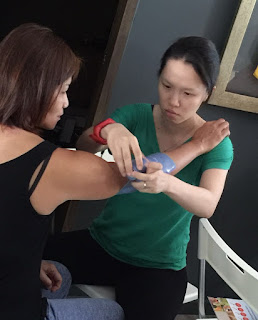This recently published
New York Times article definitely caught my attention. The author writes that "exercise is not the path to strong bones." In fact the author says that "exercise has little or no effect on bone strength."
The author then proceeds to discuss studies that showed increased bone density in subjects as a response to jump and weight training. However she wrote that "those studies failed to find anything more than a minuscule exercise effect - on the order of 1 percent or less, which is too small to be clinically significant."
So of course I went to look at the article she mentioned and it turns out I had
written about that published study last year.
I looked up the article again. Here are my thoughts.
Consider that we reach peak bone mass at the end of puberty after which the normal course of ageing involves a steady loss of bone that is almost impossible to stop or prevent. This makes the 1 percent pretty important in my opinion. If you consider a decade or a lifetime of 1 percent effect instead of a single year, now that would be truly significant.
Hence when we treat patients with osteoporosis or patients who are osteopenic, just maintaining or slowing the loss of their bone mass is considered successful. Especially when this translates to a lower fracture risk.
What I also got from another article is that our bones do not get strong only because of weight bearing exercise. Two other important factors are jarring impacts and resistance training. Both make a big difference to the hip and spine - specific areas where bone density is most vulnerable.
Well, if you're a runner you can rejoice then since runners get repeated jarring impacts with each step you run. Turns out the authors found that runners have similar bone density to strength trained subjects, Cyclists have lower bone density since they not have have jarring impacts and if they do not strength train.
So don't stop running, strength training or your weight bearing exercises.
References
Hinton PS, Nigh P et al (2015). Effectiveness Of Resistance Training Or Jumping-exercise To Increase Bone Mineral Density in Men With Low Bone Mass: A 12-month Randomized, Clinical Trial. Bone. 79: 203-212. DOI: 10.1016/j.bone.2015.06.008.
Rector RS, Rogers R, Reubel M, Widzer MO and Hinton PS (2009). Lean Body Mass And Weight-bearing ActivityIn The Prediction Of Bone Mineral Density In Physically active Men. J Strength Cond Res. 23(2): 427-435. DOI: 10.1519/JSC.0b013e31819420e1.














